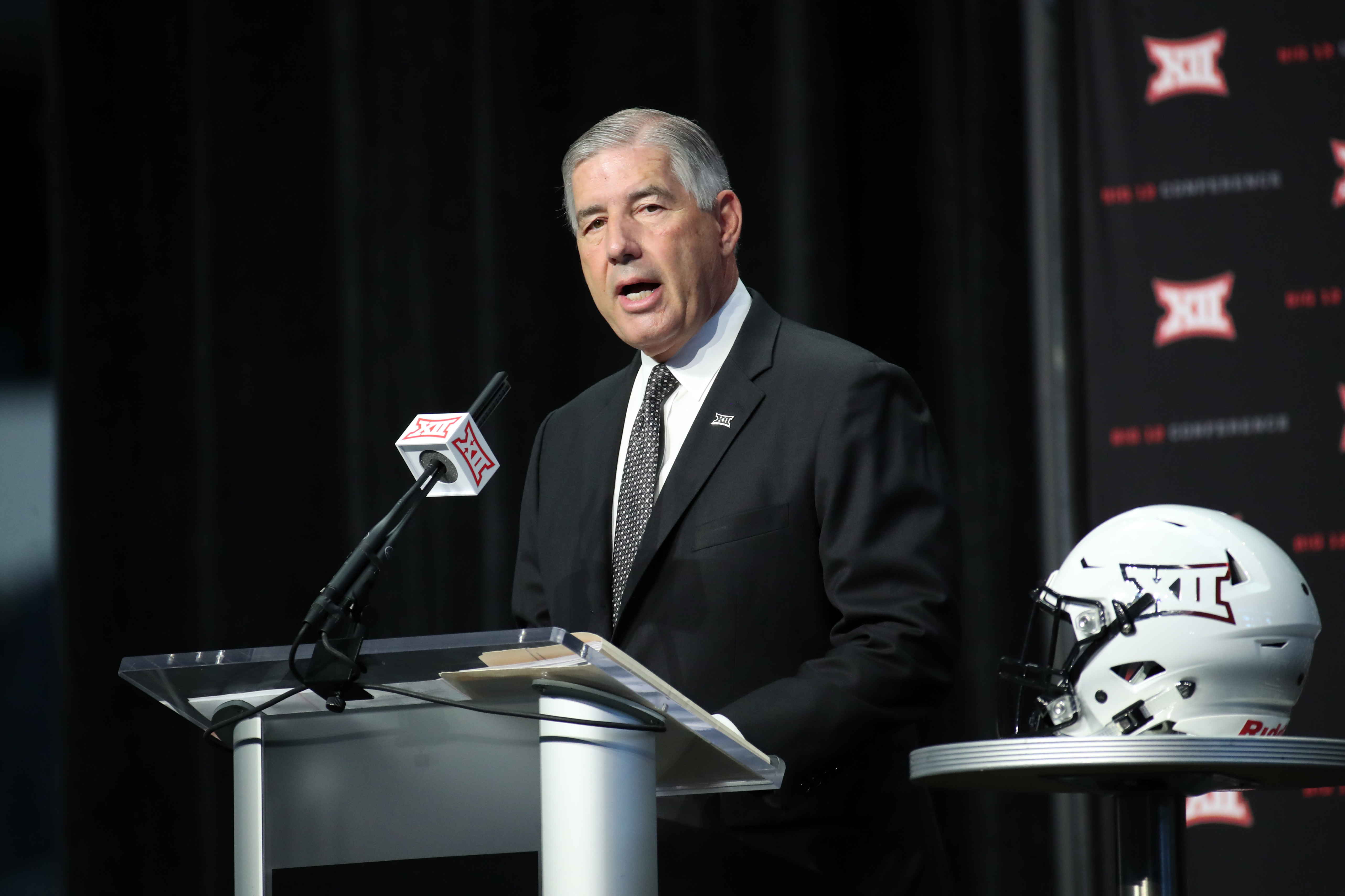ARLINGTON, Texas – After years of uncertainty following the Great Conference Realignment of 2012, Big 12 commissioner Bob Bowlsby sees a league that is finally coming into its own.
The questions of expansion that once peppered league officials are no longer an issue.
“That would be the seventh year in a row we have been asked that question first,” Bowlsby noted in a half-exasperated, half-joking manner. “We have had no expansion discussion at any level. We like the 10 we have. We think the full round-robin is the way to conduct competition and in the case of basketball, a full double round-robin.
“We are distributing record revenues ($38.8 million) and we have heretofore unanticipated media opportunities and I don’t expect [expansion] to be an active topic on anybody’s agenda within the conference any time in the foreseeable future.”
The Big 12 remains the only major college conference without its own television network, but took what Bowlsby views as a more forward-looking approach this offseason in its digital collaboration with ESPN.
The league’s online streaming service, branded as Big 12 Now, will begin its rollout this fall. West Virginia won’t fully be on board until 2020, but Mountaineers road games in various sports may appear on the platform this year.
“We believe that the ESPN-Plus platform embodied in Big 12 Now is the right thing technologically,” Bowlsby said. “We are not going to see an environment where cable television is going to see more subscribers. That doesn’t seem likely. It continues to be the way most American receive their sports viewing, but the migration is extraordinary and the past year our conference has been very much involved with our partners at ESPN to dramatically move forward in how we deliver our product to our fans.”
Bowlsby said another advantage of a streaming service is that it avoids the battles with cable providers that other leagues have faced. Bowlsby, a former Iowa athletic director, noted the Big Ten Network had a rocky debut.
“The first year of the Big Ten Network, you couldn’t get Ohio State football in Central Ohio,” Bowlsby said. “And believe me, there were a few angry people who called. And the answer was we can’t fix this, you have to talk to your cable provider.”
Bowlsby cited the Big 12 football championship game as another mark of league success. Despite some initial blowback after instituting the game in 2017, he thinks it has worked out better than expected in regards to giving the league champion a boost in the College Football Playoff discussion. Oklahoma has reached the playoff both years since the title game was revived.
“I think we know it’s always going to be a rematch, whether it’s OU-Texas or a rematch with some other game over the course of the regular season,” Bowlsby said. “We believe in the one versus two model. We’re the only ones that can guarantee we’re going to have our best teams playing each other.”
Of course, the downside is that one year a two- or three-loss team could conceivably upset an undefeated Big 12 champ and jeopardize its playoff hopes.
“Is there a potential downside? Sure there is,” Bowlsby said. “Names a place where there isn’t some downside to go along with the upside.”




